In fact, from the advocacy of Xiaomi, we can see what configuration people are paying attention to when they buy TV. “Buy TV is to buy screen,†“monster-level performance,†and “content is twice as much as friends,†and so on, through Xiaomi. The popularity of new products, this issue and everyone to talk about TV products need to pay attention to the technical terms, read this after you buy TV should be more rational and accurate.
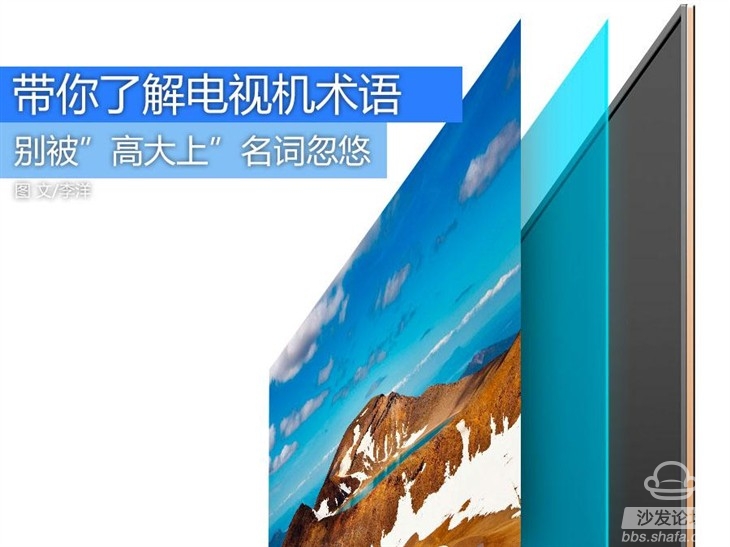
First of all, he is starting from the most important screen.
Panel, backlight Most people understand: buy a TV is to buy the screen, the panel is good TV quality on the NB
Here, the panel we are referring to actually refers to the liquid crystal panel with the backlight removed, not to the liquid crystal module. The biggest difference between these two concepts lies in the presence or absence of backlight. Taking Xiaomi TV 2S as an example, its backlight is completely designed and developed by Xiaomi. It is not a one-piece design with the original Samsung panel.
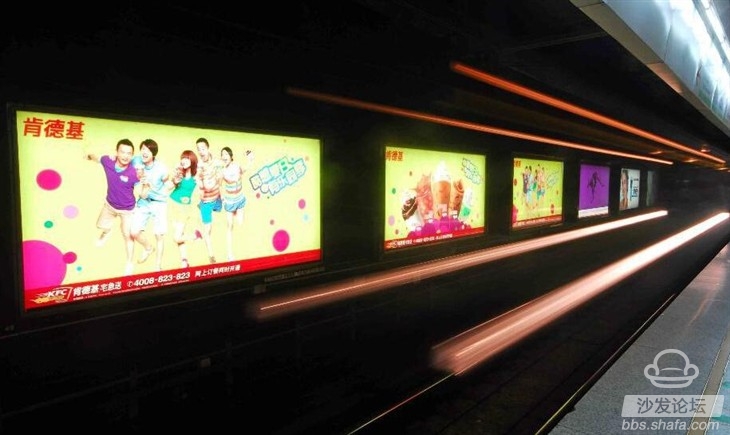
To give a simple example, if you are looking at the lightbox advertisements on the roadside at night, only the front inkjet image is useless, and it requires the backlit backlight to be seen by the passers-by. In fact, the same is true for LCD TVs. The panel is equivalent to the spray painting on the front of the advertising board, and the backlight is the necessary component to enhance the visual expression of the advertising screen. Back to the LCD TV, its image quality and the LCD panel and backlight design are There is a big relationship. The panel is just a prerequisite for good picture quality.
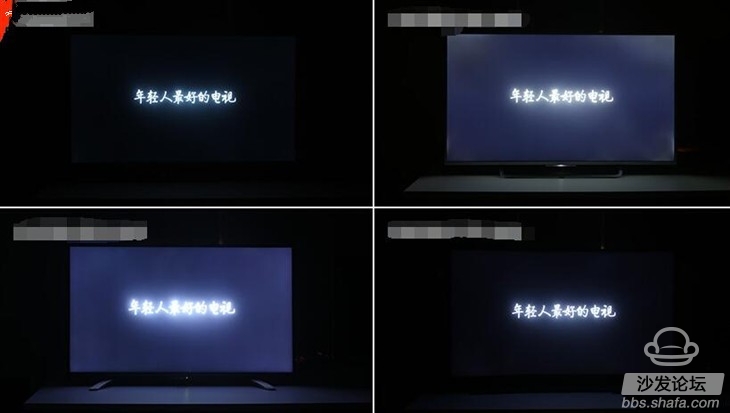
The combination of the panel and backlight can output high-quality images with high contrast and high color gamut. Both can be said to be indispensable. We can't think that the screen is good to represent good picture quality. Now 2-3000 yuan TV is motionless to say that they use Sharp, Samsung, LG panels, can such a cheap TV can do a good picture who will buy high-end goods? The color depth and response time of LCD panels in high-end TVs, the number of primary colors of backlights, partition control, and backlight scanning all lead the way to entry-level TVs with the advantage of roller compaction, and the cost is not the same.
Wide color gamut Most people understand: Wide color gamut is good quality
In fact, the wide color gamut does mean a good picture quality, but a good picture quality television should also have accurate color reproduction, high definition, excellent noise reduction, backlight partition control, high contrast, dynamic picture clear and jitter-free, and so on. The color gamut is only a good part of the picture quality, and it is still a relatively small part, because many people are not sensitive to the wide color gamut.
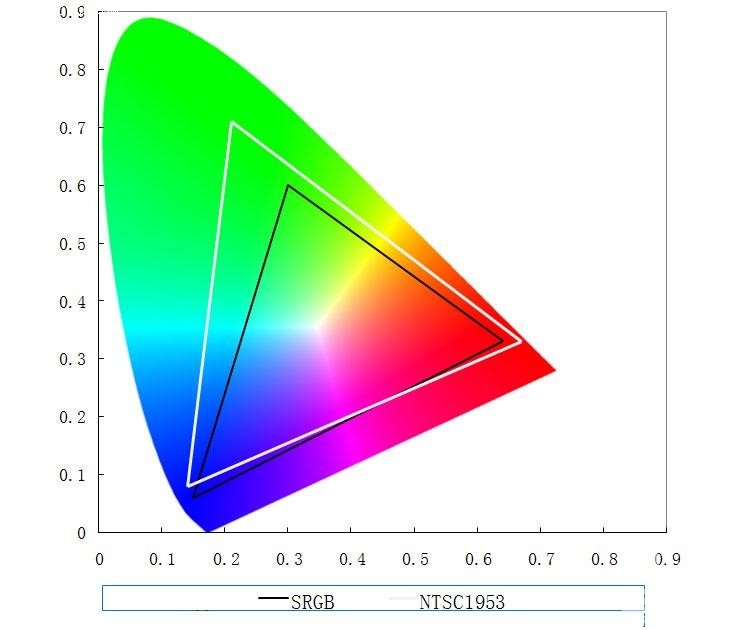
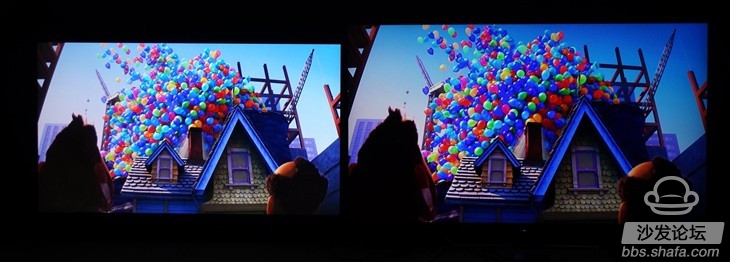
The above horseshoe shape is a well-known color gamut diagram. The middle triangle is RGB, and the outer triangle is the NTSC standard color gamut range often used in TV. Can we see the difference between the red, blue, and green primary colors at the top of the two triangles? Color gamut refers to the range of colors the TV can display, but before outputting to the screen, you need to have a pair of eyes that are extremely sensitive to color. If there is no comparison, it is estimated that few people can see how much difference the wide color gamut TV and ordinary TV have. Color range perception is far less sensitive to color saturation and color temperature.
Image quality processing engine Most people understand: I rub, really high-end
It can't be said that the picture quality engine is ambiguous, but in most TVs, the picture quality processing techniques advertised by the merchants have been exaggerated. The most direct example is the introduction of some TV sets of the same brand. You may find it low. Both high-end and high-end TVs are using the same set of promotional terms. The quality engine is basically the same. Can we understand that there is no difference in their quality? In the end is the quality of high-end TV pictures as good as entry-level, or is there no difference between low-end goods and high-end products? Do you think that those systems menus that have only a few parameters of brightness, contrast, saturation and simple adjustment parameters will give you a better picture quality?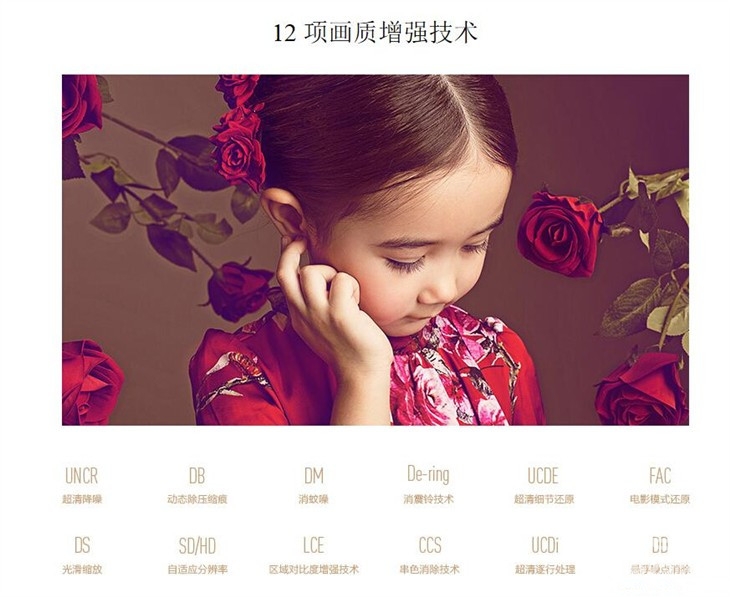


Also take a simple and easy to understand example, the picture above is the screen shot of the millet TV in the default definition of 50, can clearly see the face area is unacceptable color block noise, hair texture is also blunt, and you Aside from the pages of the millet TV 2S, you will find that its 12 image quality enhancement techniques include ultra-clear noise reduction, mosquito cancellation, noise removal, and noise reduction. However, you can feel the power of noise reduction from the screen shots. Yet?

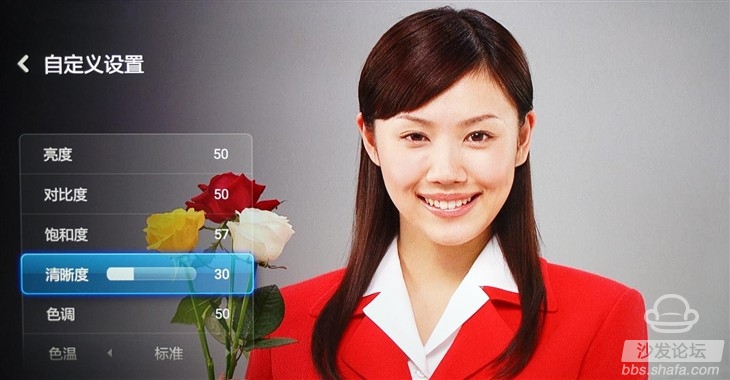
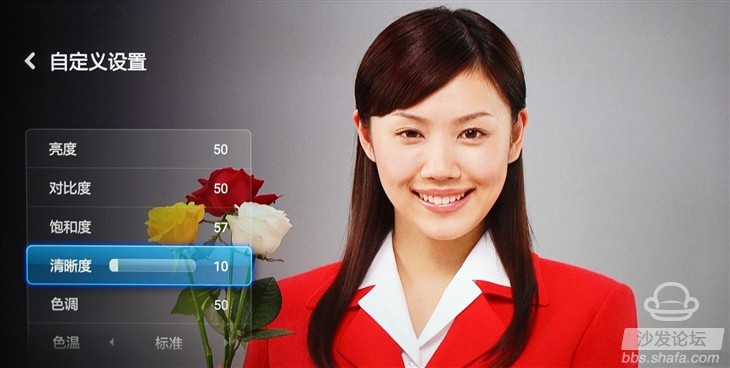
In fact, this problem has been shown in many of the introductory 4K TVs that I have come across. The main reason is that they have caused noise and people’s hard-to-behave problems because of their sharpness. We have reduced the sharpness or sharpness of TVs after purchasing TV. The options can greatly ease the problem, as can be seen from the portrait performance of the millet TV after reducing the clarity.
The above is a brief introduction to the technical terms of TV picture quality. Then let's talk about the things that need attention in the hardware and software.
Ten-core 64-bit 4K decoding Most people understand that the higher the number, the better my TV performance becomes.
Do not know when the television industry has done the same with the mobile phone ring, no bright spots can be sold to promote the hardware configuration. First of all, the concept that everyone should make clear is that these few-core CPUs and several core processors are not closely related to the picture quality. They are only used for in-television intelligent systems and network and USB video decoding.
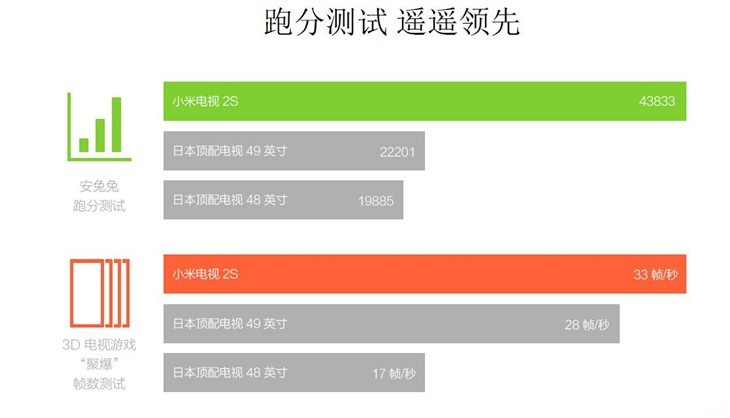
From our practical application, we can see that the hardware configuration does not really dominate the television publicity. The applications available on TV for powerful configurations are rare, and you can watch a quad-core processor with a high frequency at Youku. Do you "enhance fluency"? In addition to large games, there is basically no software that allows the SOC in the TV to run at a high load. Even if the hardware configuration was implemented a year ago, it is enough to support the smooth running of the TV intelligent system. As for 64-bit, please utter the 64-bit Android APP in your cognizance area. The answer is no, 32-bit APP will not have an increase in performance under the 64-bit hardware architecture, so 64-bit is temporarily useless.
 Of course, we can not completely exclude high-performance hardware architecture. For TV, the most important meaning of hardware systems is to support more video encoding formats. If the supported format is limited, it will cause some videos to fail to play. The mainstream hardware has almost no difference in decoding capability in the 1080P era, while the 4K era requires updated hardware support. At present, only the latest hardware can enable the TV to support H.265-encoded 60-frame 4K video hard solutions. On the basis of this condition, the hardware performance is actually not very important to the TV.
Of course, we can not completely exclude high-performance hardware architecture. For TV, the most important meaning of hardware systems is to support more video encoding formats. If the supported format is limited, it will cause some videos to fail to play. The mainstream hardware has almost no difference in decoding capability in the 1080P era, while the 4K era requires updated hardware support. At present, only the latest hardware can enable the TV to support H.265-encoded 60-frame 4K video hard solutions. On the basis of this condition, the hardware performance is actually not very important to the TV.
HDMI2.0
Most people understand: An HDMI interface
For 4K TV, HDMI2.0 interface is extremely necessary, many people only know 4K TV but do not understand HDMI2.0. HDMI2.0 interface is an interface specification that is completely born for 4K. It can support 60 frames of 4K video encoding that may become mainstream in the future, and the depth of color is also upgraded from 8-bit color of HDMI1.4 version to 10-bit, and HDMI2. 0 is also fully upgraded in audio output specifications, and up to 32 channels of lossless audio support provide technical support for the output of cinema-like stereo sound effects.
Above, I summarize the hardware reference points that are important for TV selection. If you don’t know about TV, it should be helpful. At least, you can look at the details of the TV e-commerce details page under the gorgeous icing package in a more rational way. product.

First of all, he is starting from the most important screen.
Panel, backlight Most people understand: buy a TV is to buy the screen, the panel is good TV quality on the NB
Here, the panel we are referring to actually refers to the liquid crystal panel with the backlight removed, not to the liquid crystal module. The biggest difference between these two concepts lies in the presence or absence of backlight. Taking Xiaomi TV 2S as an example, its backlight is completely designed and developed by Xiaomi. It is not a one-piece design with the original Samsung panel.

Without backlight support, lightbox advertising in low-light environments will not make sense
To give a simple example, if you are looking at the lightbox advertisements on the roadside at night, only the front inkjet image is useless, and it requires the backlit backlight to be seen by the passers-by. In fact, the same is true for LCD TVs. The panel is equivalent to the spray painting on the front of the advertising board, and the backlight is the necessary component to enhance the visual expression of the advertising screen. Back to the LCD TV, its image quality and the LCD panel and backlight design are There is a big relationship. The panel is just a prerequisite for good picture quality.

The understanding of the backlight is not only so light leakage, the backlight does not reach the TV can not restore the original contrast and dark field of the video
The combination of the panel and backlight can output high-quality images with high contrast and high color gamut. Both can be said to be indispensable. We can't think that the screen is good to represent good picture quality. Now 2-3000 yuan TV is motionless to say that they use Sharp, Samsung, LG panels, can such a cheap TV can do a good picture who will buy high-end goods? The color depth and response time of LCD panels in high-end TVs, the number of primary colors of backlights, partition control, and backlight scanning all lead the way to entry-level TVs with the advantage of roller compaction, and the cost is not the same.
Wide color gamut Most people understand: Wide color gamut is good quality
In fact, the wide color gamut does mean a good picture quality, but a good picture quality television should also have accurate color reproduction, high definition, excellent noise reduction, backlight partition control, high contrast, dynamic picture clear and jitter-free, and so on. The color gamut is only a good part of the picture quality, and it is still a relatively small part, because many people are not sensitive to the wide color gamut.

The color gamut of most TVs covers more than 70% of the white triangle range

According to my test, the left TV color gamut is higher than the right, but who's color is more pleased with you?
The above horseshoe shape is a well-known color gamut diagram. The middle triangle is RGB, and the outer triangle is the NTSC standard color gamut range often used in TV. Can we see the difference between the red, blue, and green primary colors at the top of the two triangles? Color gamut refers to the range of colors the TV can display, but before outputting to the screen, you need to have a pair of eyes that are extremely sensitive to color. If there is no comparison, it is estimated that few people can see how much difference the wide color gamut TV and ordinary TV have. Color range perception is far less sensitive to color saturation and color temperature.
Image quality processing engine Most people understand: I rub, really high-end
It can't be said that the picture quality engine is ambiguous, but in most TVs, the picture quality processing techniques advertised by the merchants have been exaggerated. The most direct example is the introduction of some TV sets of the same brand. You may find it low. Both high-end and high-end TVs are using the same set of promotional terms. The quality engine is basically the same. Can we understand that there is no difference in their quality? In the end is the quality of high-end TV pictures as good as entry-level, or is there no difference between low-end goods and high-end products? Do you think that those systems menus that have only a few parameters of brightness, contrast, saturation and simple adjustment parameters will give you a better picture quality?

TV picture quality processing should not be "heap" text introduction is so simple

Here is the image processing technology used by Sony's strongest image quality

50-inch sharp TV screen
Also take a simple and easy to understand example, the picture above is the screen shot of the millet TV in the default definition of 50, can clearly see the face area is unacceptable color block noise, hair texture is also blunt, and you Aside from the pages of the millet TV 2S, you will find that its 12 image quality enhancement techniques include ultra-clear noise reduction, mosquito cancellation, noise removal, and noise reduction. However, you can feel the power of noise reduction from the screen shots. Yet?



Portrait expressions with different sharpness
In fact, this problem has been shown in many of the introductory 4K TVs that I have come across. The main reason is that they have caused noise and people’s hard-to-behave problems because of their sharpness. We have reduced the sharpness or sharpness of TVs after purchasing TV. The options can greatly ease the problem, as can be seen from the portrait performance of the millet TV after reducing the clarity.
The above is a brief introduction to the technical terms of TV picture quality. Then let's talk about the things that need attention in the hardware and software.
Ten-core 64-bit 4K decoding Most people understand that the higher the number, the better my TV performance becomes.
Do not know when the television industry has done the same with the mobile phone ring, no bright spots can be sold to promote the hardware configuration. First of all, the concept that everyone should make clear is that these few-core CPUs and several core processors are not closely related to the picture quality. They are only used for in-television intelligent systems and network and USB video decoding.

TV is not a mobile phone, really not too harsh on its performance requirements
From our practical application, we can see that the hardware configuration does not really dominate the television publicity. The applications available on TV for powerful configurations are rare, and you can watch a quad-core processor with a high frequency at Youku. Do you "enhance fluency"? In addition to large games, there is basically no software that allows the SOC in the TV to run at a high load. Even if the hardware configuration was implemented a year ago, it is enough to support the smooth running of the TV intelligent system. As for 64-bit, please utter the 64-bit Android APP in your cognizance area. The answer is no, 32-bit APP will not have an increase in performance under the 64-bit hardware architecture, so 64-bit is temporarily useless.

HDMI2.0
Most people understand: An HDMI interface
For 4K TV, HDMI2.0 interface is extremely necessary, many people only know 4K TV but do not understand HDMI2.0. HDMI2.0 interface is an interface specification that is completely born for 4K. It can support 60 frames of 4K video encoding that may become mainstream in the future, and the depth of color is also upgraded from 8-bit color of HDMI1.4 version to 10-bit, and HDMI2. 0 is also fully upgraded in audio output specifications, and up to 32 channels of lossless audio support provide technical support for the output of cinema-like stereo sound effects.
Above, I summarize the hardware reference points that are important for TV selection. If you don’t know about TV, it should be helpful. At least, you can look at the details of the TV e-commerce details page under the gorgeous icing package in a more rational way. product.
Plug-In Thermostat,Smart Thermostat,Electric Radiant Floor Heating Thermostats,Infrared Heating Thermostats
Yuyao Huijun Electrical Appliance Co., Ltd. , https://www.yyhjdq.com